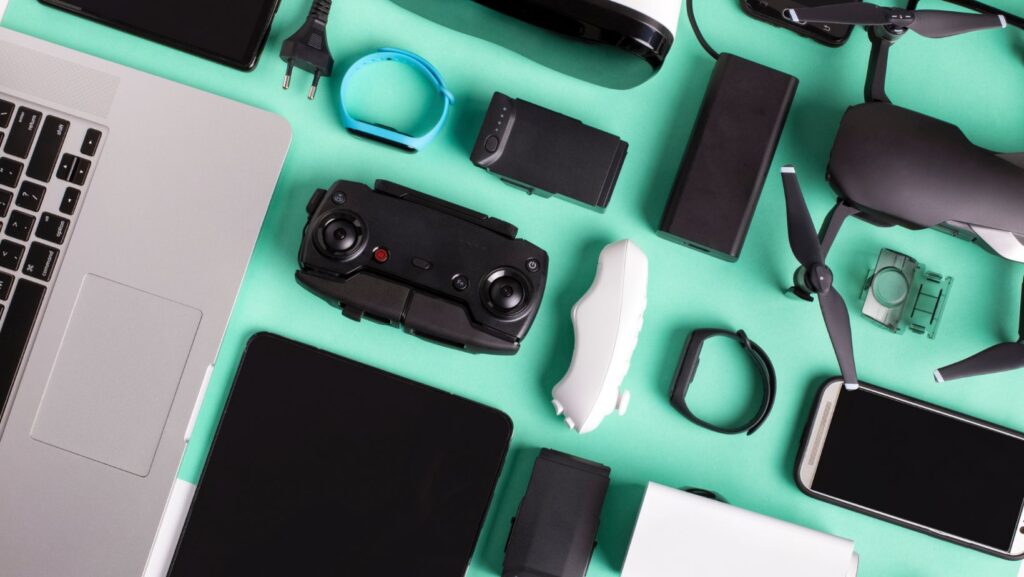In the fast-paced world of technology, smart connected products have become a game-changer. They’re revolutionizing the way we live, work, and interact with the world around us. From smart homes to wearable tech, these advanced devices are reshaping our everyday experiences.
The growing reliance on these innovative products isn’t just a trend—it’s a testament to the power of connectivity and intelligent design. But what exactly are smart connected products? How do they work, and more importantly, how are they transforming our lives? Let’s delve into the world of smart connected products and uncover the magic behind the technology.
Smart Connected Products
 The evolution of smart connected products presents a fascinating journey. Tracing this progression unravels decades of technological advancements that led to today’s smart culture.
The evolution of smart connected products presents a fascinating journey. Tracing this progression unravels decades of technological advancements that led to today’s smart culture.
In the early days, basic electronics dominated the tech landscape. Over the years, the transition from mere electronics to IoT devices unfolded, marking a turning point in technology. With the onset of Internet connectivity, devices took a leap, embracing interactivity and smart functionality. For instance, the first-generation mobile phones, primarily designed for calling and messaging, evolved into smartphones offering internet access, multimedia entertainment, and a myriad of applications.
Impact of Connectivity on Everyday Devices
The advent of connectivity remarkably impacted everyday devices. Tapping into the potential of the internet, these gadgets transformed from standalone units into interconnected systems. A smart TV, beyond providing television programming, integrates streaming services, web browsing, and social media platforms. Likewise, home appliances like refrigerators, once only for preserving food, now offer features like temperature control via mobile apps, internal cameras, and even grocery shopping capabilities through internet connectivity.
Key Features of Smart Connected Products
 As smart connected products emerge with modern technological trends, they carry several advanced features that augment the user experience, given below with more context: One significant feature of smart connected products resides in their multiple connectivity options. These options range from traditional Wi-Fi and Bluetooth connections to more advanced methods like Near Field Communication (NFC) and Zigbee. For instance, smart speakers often showcase Bluetooth for a direct link to a phone or laptop, but also support Wi-Fi for broader home network integration. Automation and control remain at the core of smart connected products’ most impactful features. These devices, from smart thermostats that adjust the temperature based on your routine to automated pet feeders that ensure your furry companions never miss a meal, provide convenience and control in one’s hands. For example, consider a smart lighting system, which can automatically turn off when there’s sufficient daylight in the room, or be controlled remotely from a smartphone application. This signals an era of unprecedented automation and control with the power of connectivity.
As smart connected products emerge with modern technological trends, they carry several advanced features that augment the user experience, given below with more context: One significant feature of smart connected products resides in their multiple connectivity options. These options range from traditional Wi-Fi and Bluetooth connections to more advanced methods like Near Field Communication (NFC) and Zigbee. For instance, smart speakers often showcase Bluetooth for a direct link to a phone or laptop, but also support Wi-Fi for broader home network integration. Automation and control remain at the core of smart connected products’ most impactful features. These devices, from smart thermostats that adjust the temperature based on your routine to automated pet feeders that ensure your furry companions never miss a meal, provide convenience and control in one’s hands. For example, consider a smart lighting system, which can automatically turn off when there’s sufficient daylight in the room, or be controlled remotely from a smartphone application. This signals an era of unprecedented automation and control with the power of connectivity.
Benefits of Using Smart Connected Products
 A substantial wave of benefits showers down on users of smart connected products. These advantages range from heightened efficiency to person-centered experiences.
A substantial wave of benefits showers down on users of smart connected products. These advantages range from heightened efficiency to person-centered experiences.
Smart connected products, exemplified by instances like smart plugs or digital locks, drive efficiency and enhance convenience. They eliminate repetitive or mundane tasks for users as they permit remote access and control. For example, a digital lock can open using a smartphone app, eradicating the need for physical keys and uncertainties about them being lost or forgotten. Similarly, smart plugs enable users to turn appliances on or off remotely, optimizing energy use and lowering utility bills. Thus, smart connected products pave the way for improved efficiency and extraordinary convenience in day-to-day life.
Smart connected products, at their core, embody personalization. These tools learn from user behavior patterns, tweaking their operations to provide customized experiences. Take smart thermostats as an example. They can learn a homeowner’s temperature preferences over time and auto-adjust accordingly, offering a bespoke comfort level and reducing energy waste. Smart speakers, on the other hand, can curate personalized playlists, identify individual voices, and deliver information based on tastes and preferences. Consequently, smart connected products enhance the user experience through understanding and meeting unique user needs in a deeply personal manner.



